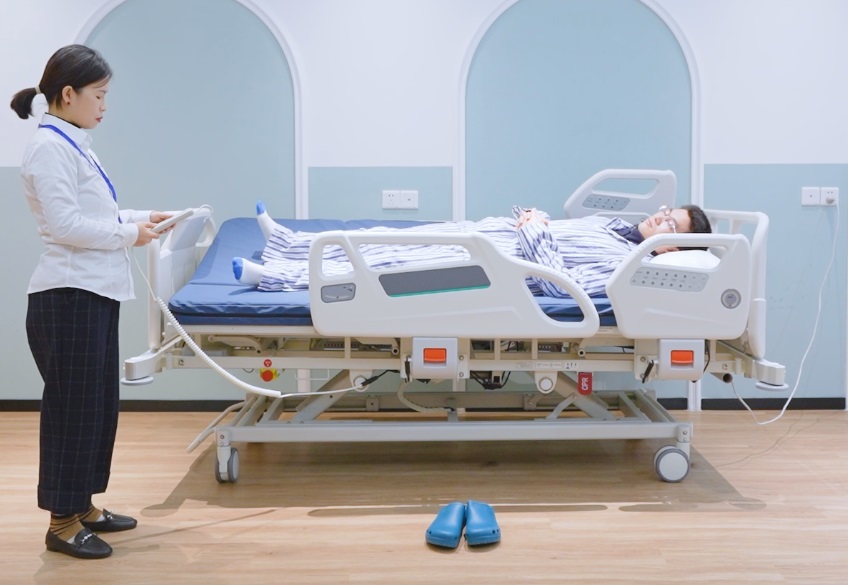In the newly launched smart ward of a certain tertiary hospital, an intelligent hospital bed integrating Internet of Things and artificial intelligence technologies is quietly reshaping the daily routine of nursing work: nurses only need to tap the remote control, and the bed can be smoothly raised and lowered to the designated Angle. When the patient turns over, the mattress pressure sensor automatically records the vital sign data. Even the most physically demanding task of material handling is shouldering 80% of the load by hidden electric power-assisted devices. How does this multi-functional nursing bed, which is called a "stress-reducing wonder" by medical staff, make the nursing work "smooth"?
mut 
The "heaviness" of hospital beds in traditional hospitals used to be a collective pain point for the nursing community. Manually adjust the Angle of the bed board, repeatedly move the heavy infusion stand, and manually weigh and record at regular intervals... These repetitive labors not only consume physical strength, but also occupy the golden time that should be used for observing the condition and communicating with patients. The popularization of
electric nursing beds has completely broken through this predicament. Take a certain brand of smart hospital bed as an example. Its integrated design deeply integrates the infusion stand, position adjustment and weighing system. Nurses can complete more than 20 operations through the touch screen. While saving physical strength every day, the operation error rate is reduced to less than 0.3%.
What is even more commendable is the "invisible service" capability of the smart
hospital patient bed. The built-in AI algorithm can analyze the patient's body movement data in real time and give early warnings of the risk of falling out of bed. When the infusion is coming to an end, the intelligent system will automatically reduce the flow rate and send a reminder to the nurse station to avoid the risk of blood backflow. In the pilot department of cardiovascular internal medicine, this system has reduced the frequency of nurses' night rounds by 60%, but has increased the response speed to emergencies by three times. Ms. Li, the head nurse, said with emotion, "In the past, we were like clocks wound up tightly. Now, we finally have time to hold patients' hands and chat about daily life."
Technological innovation brings not only a leap in efficiency, but also a profound transformation of the nursing model. The new generation of intelligent hospital beds has achieved seamless integration with the hospital HIS system, and the full-process data of patients from admission to discharge is automatically synchronized to the electronic medical record. This means that nurses no longer need to manually transcribe vital sign records and can devote more energy to core medical tasks such as pain management and psychological counseling. In the pediatric ward, the smart nursing beds equipped with cartoon interfaces can even soothe the children's emotions through gamified interaction, adding a touch of humanistic warmth to the nursing work.
From "human-driven" to "technology-enabled", the popularization of smart hospital beds marks that the nursing industry is entering a new stage of precision and humanization. When cold equipment learns to "think" and repetitive work is replaced by machines, the nursing community is liberated from heavy administrative tasks and returns to the essence of medical services - safeguarding lives with professionalism and warmth. This technological revolution taking place beside hospital beds might just be the key piece of the puzzle to break the deadlock of "difficulty in seeing a doctor".

